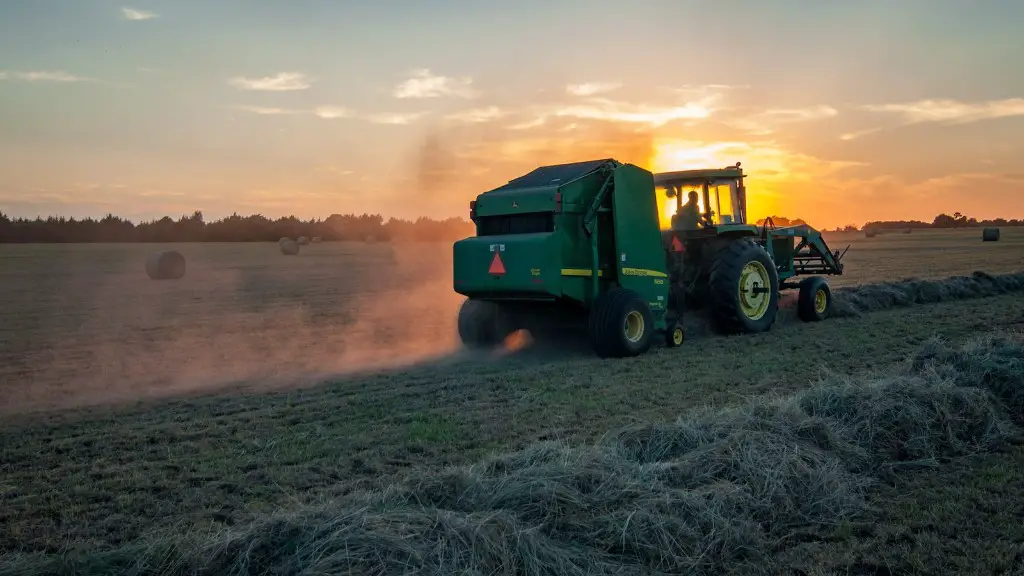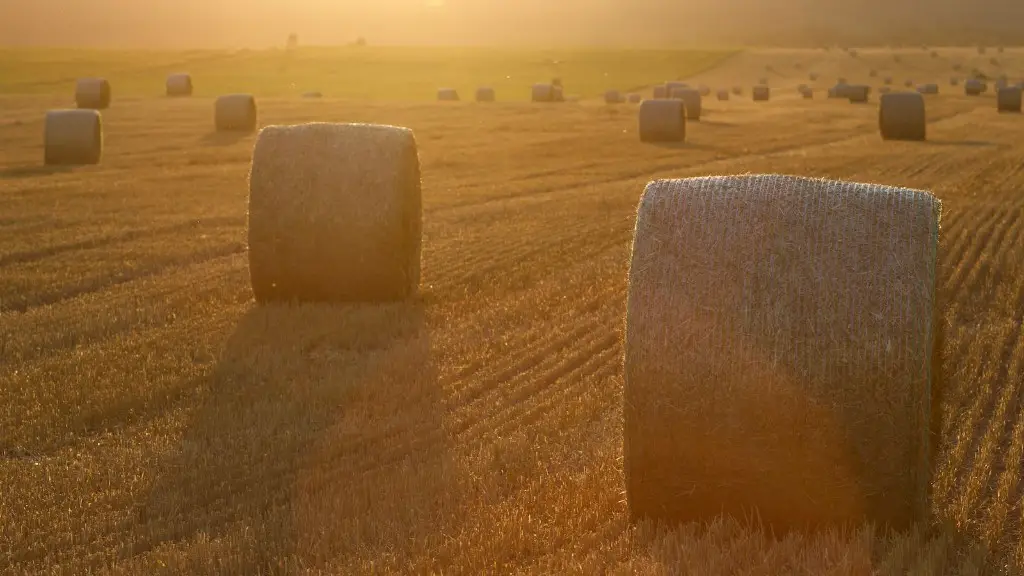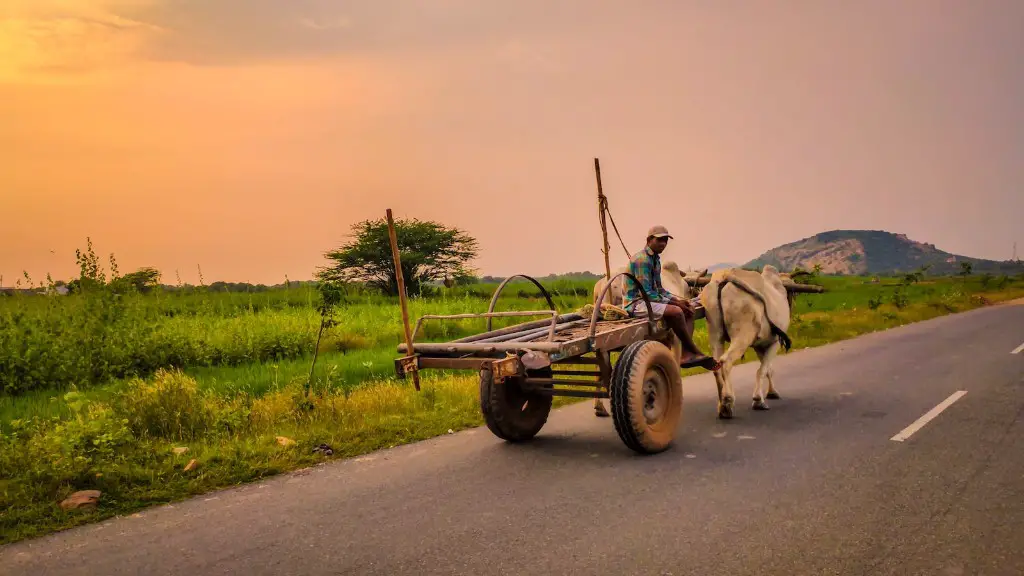Agriculture is a critical aspect of many economies, including forestry. While forestry has often been considered a subcategory of agriculture, some now argue that it should be treated as a distinct practice, given its unique economic and environmental effects. This article will analyze the various characteristics of forestry and agriculture, discussing the case for it to be classified as an agricultural activity.
Firstly, many industries rely on the products of both forestry and agriculture. Forests are an integral part of a nation’s economy and can provide resources such as timber, paper, and fuel. Similarly, agricultural activities provide crops and livestock, which contribute to food security. As such, both forestry and agriculture provide economic value, suggesting that they should be considered under the same umbrella.
However, there are a few areas in which forestry and agriculture differ. Forestry is typically managed at a large scale, with the goal of producing a lumber product. In contrast, agricultural activities usually involve smaller-scale farming with the intent to raise crops. Even when forests are managed for non-timber products, the methods are typically more structured than those used in agricultural fields. Additionally, forestry often manages the land to maintain certain levels of biodiversity, while agriculture focuses on increasing yields of edible products.
Furthermore, forestry and agriculture have different impacts on the environment. Agricultural practices are known to cause soil erosion and deforestation, while forestry operations can help protect standing forests and create carbon sinks. In addition, sustainable forestry practices can slow the impact of climate change on ecosystems by reducing the impact of deforestation and land clearing. While both activities require careful management of the land, forestry often has fewer environmental effects than agriculture.
It can be argued that forestry should be considered a part of agriculture, due to its connections to the sector. However, forestry does require a different level of management and awareness than typical agricultural activities, suggesting that it should be treated as a distinct practice. By looking at both the similarities and differences between forestry and agriculture, it is clear that forestry has a unique economic and environmental impact that sets it apart from other types of agricultural activities.
Biodiversity
Biodiversity is one of the key sources of forestry’s economic and environmental value. Forests house a variety of plant and animal species that offer a wide range of ecological services. Many species provide natural resources such as timber, food, and medicines, while others provide protection against land degradation, climate change, and floods. Forests have traditionally been managed to produce lumber, however, in recent years, the emphasis has shifted to focus more on encouraging biodiversity and preserving the ecological integrity of these lands.
By managing forests for biodiversity, forestry can help ensure the sustainability of valuable ecosystems and species. For example, the maintenance of intact forest cover helps protect against soil erosion and can support ecosystems that are adapted to local climates. In addition, forests are an important carbon sink, releasing oxygen into the atmosphere and helping to regulate global climate. These environmental features can be tapped into to create sustainable sources of fuel and climate mitigation measures, providing economic and ecological benefits.
In contrast, agricultural practices are centered around producing food and other turnable products. This focus can have a significant impact on land use. Large-scale agriculture often requires the clearing of forests, resulting in the loss of biodiversity. Farming can also result in soil erosion, degradation of ecosystems, and the introduction of invasive species, which can disrupt native species. This highlights how forestry and agriculture are two distinct activities with different impacts on biodiversity and the environment.
Forest Products
Forests are a valuable source of natural resources which can be used for a variety of purposes. Furthermore, the forestry sector can be an important provider of economic opportunities. By producing products such as lumber, paper, fuel, and food, forestry can contribute to local and national economies. The sale of lumber is often a primary source of revenue for many communities, while other products provide additional value. Forests are also an important source of timber, paper, and fuel, providing jobs to those in the sector.
Agricultural activities, on the other hand, are primarily focused on food production. Crops and livestock are the major economic drivers of the sector, providing food and other agricultural products for the local and global market. While other activities like beekeeping and aquaculture offer value, they are often not considered traditional agricultural activities. In some areas, agricultural activities may also provide non-edible products such as straw and hay, however, these are usually used in smaller amounts than forestry products.
In addition, forestry and agriculture offer different services to society. Forests play an important role in providing natural resources such as clean water, reducing air pollution, and controlling erosion. They also act as buffers from extreme weather, provide habitat for wildlife, and offer recreational opportunities. Similarly, agricultural activities offer food and other turnable products, while farming can also provide employment, support local markets, and promote rural development.
The products and services provided by forestry and agriculture are quite distinct. While both practices offer economic and ecological benefits, their impacts on the environment vary, as do their economic structures and products. This suggests that forestry should not be considered a part of agriculture and should instead be treated as a distinct practice.
Regional Structures
The organizational structure of forestry and agriculture may also differ between regions. For instance, in the US, forestry is managed at the state level, while agriculture is regulated by the US Department of Agriculture (USD) at the federal level. These regulatory frameworks determine the scale, scope, and practices associated with each activity, highlighting how the two are distinct. Additionally, the management of forests and agricultural land differs by the agencies responsible. For example, the USD focuses on conservation initiatives, while forestry is managed to maximize economic returns.
In other countries, the distinctions between forestry and agriculture can be even more complex. In Canada, forestry and agricultural resources are mainly managed by provincial and territorial governments, while the federal government oversees specific types of forestry activities, such as silviculture. In Europe, forestry activities are usually managed by special associations, while agricultural affairs are typically overseen by governments. These varied regulations suggest that forestry and agriculture are managed differently and require distinct approaches, further strengthening the argument that forestry should not be considered an agricultural activity.
The regulatory structures for forestry and agriculture vary by region, suggesting that the two practices are distinct from each other. These distinctions are further highlighted by the differing goals and methods of management, emphasizing how forestry is a distinct activity from agriculture.
Economic Contribution
The economic benefits of forestry and agriculture are also unique. Forests are a crucial source of renewable energy, providing materials such as lumber and paper, while also offering fuel and food. Forestry also generates economic value through carbon offsetting and tourism. Likewise, agriculture provides food and other resources, while also offering employment and supporting rural economies.
The economic benefits of these two sectors are often linked. For example, farms may be adjacent to forests, or forests may be adjacent to agricultural lands, allowing the two to benefit from each other. In addition, forestry can provide resources for agricultural activities, such as wood for fencing and fuel for machinery. Similarly, forestry activities often occur in areas that have been previously cleared for agriculture, providing jobs and opportunities for rural communities.
These economic connections demonstrate that forestry and agriculture are two distinct activities with different economic impacts. Forestry contributes to rural economies by providing products, jobs, and services, while agriculture focuses more on food production. Thus, forestry should not be considered a subcategory of agriculture but rather treated as a distinct practice in its own right.
Social Implications
The social implications of forestry and agriculture are another area of concern. Agriculturally deprived areas may be in danger of deforestation, while well-managed forests can provide economic opportunities and feed into local economies. Forests also provide recreational space and can act as a social resource, while agricultural activities can create isolated communities and lead to land conversions.
Furthermore, the social impacts of forestry and agriculture can vary depending on the region. In some areas, deforestation can occur due to illegal logging, while agricultural activities such as mono-cropping can degrade land quality. In other places, sustainable forestry practices can protect forests and provide economic opportunities for rural communities.
Ultimately, the social implications of forestry and agriculture must be taken into consideration when assessing their relative impact on the environment. While both activities provide valuable environmental and economic benefits, their social effects can differ dramatically. For this reason, it is important to consider forestry and agriculture as two distinct practices, distinct from each other in terms of their social, economic, and environmental impacts.
Conclusion
To conclude, forestry is a distinct activity from agriculture, with distinct ecological, economic, and social impacts. Forestry is typically managed at a large scale to produce lumber, while agriculture focuses more on food production. In addition, forestry often has fewer environmental effects than agriculture, providing a valuable source of renewable energy, jobs, and services. While there are economic and social links between forestry and agriculture, the two should not be considered a part of each other, but rather treated as distinct practices.





